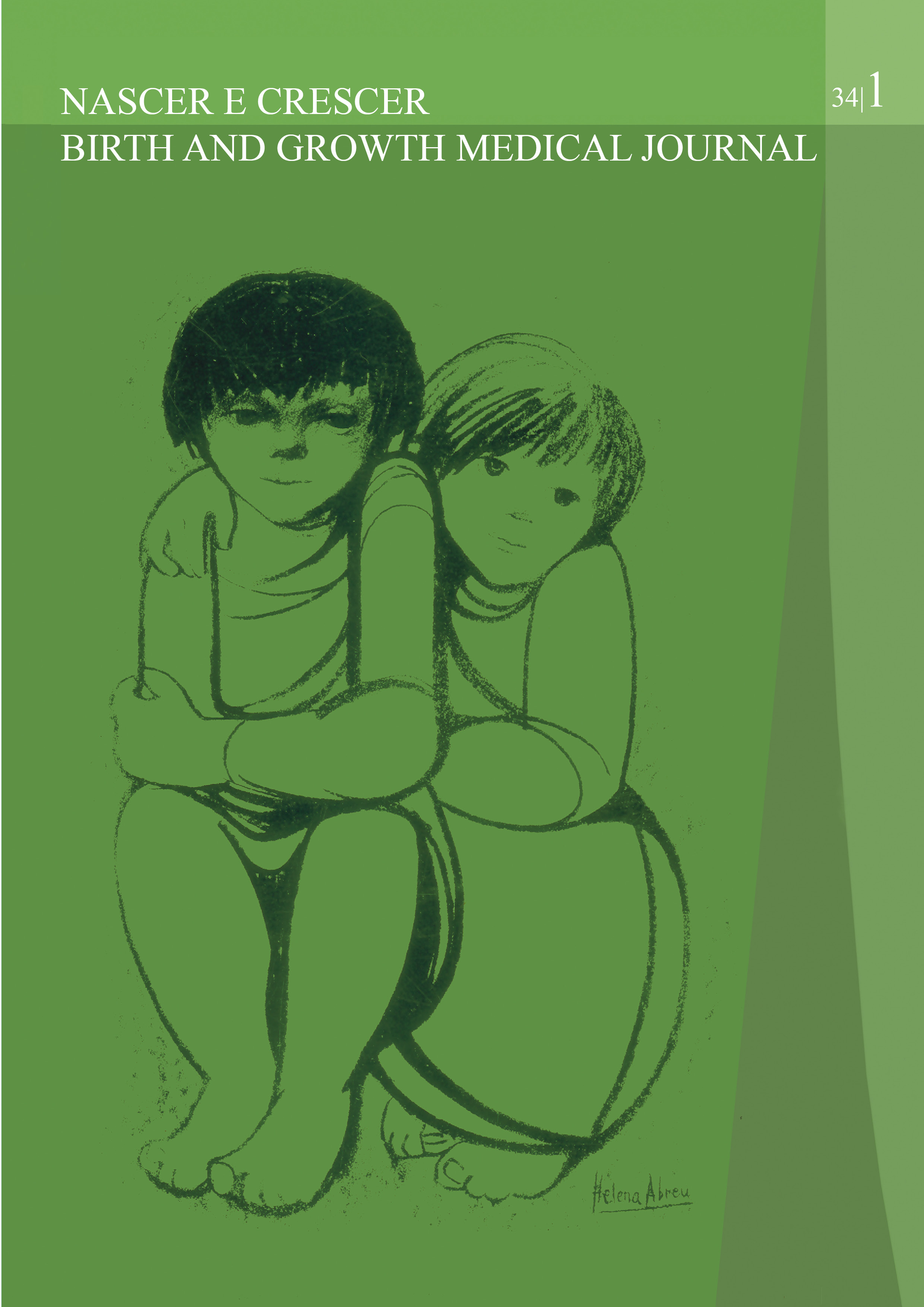Cyberbullying in pre-adolescence - reality of a city in northern Portugal
DOI:
https://doi.org/10.25753/BirthGrowthMJ.v34.i1.37627Keywords:
childhood, cyberbullying, pre-adolescence, social networksAbstract
Introduction: The rapid evolution of communication technologies has enabled easy and premature access for children and young people to social networks, the internet, and smartphones. The indiscriminate use of these technologies has led to the emergence of cyberbullying. The objective was to analyse the prevalence of cyberbullying and the most frequent forms involved in this age group.
Methods: A cross-sectional observational study was conducted through anonymous questionnaires distributed in primary schools (2nd and 3rd cycles) in the municipality.
Results: The study included 482 students, with a median age of 12 years (9-15 years), and a similar gender distribution (55% female, 45% male). Regarding the daily screen time, 20.5% reported spending less than 1 hour, 47.7% between 1 to 3 hours, while 31.1% spent more than 3 hours per day. The prevalence of cyberbullying in the studied sample was 30.9%, with 34.9% of them admitting to being victims in the last 3 months, with only 50% requesting help. The most reported type of cyberbullying was being excluded from a chat or social network. In the subsample of children who experienced cyberbullying, a statistically significant relationship was found between victimization and being female (p-value 0.046) and between victimization and being an aggressor (p-value <0.001).
Conclusion: According to this study, the exposure to digital technology in this age group is practically universal, with a cyberbullying prevalence of around 31%. This alarming victimization rate occurs during a crucial phase of the child's social and emotional development.
Downloads
References
Wang CW, Musumari PM, Techasrivichien T, Suguimoto SP, Chan CC, Ono-Kihara M, et al. “i felt angry, but i couldn’t do anything about it”: A qualitative study of cyberbullying among Taiwanese high school students. BMC Public Health. 2019 May 28;19(1).
Kowalski R, Giumetti G, Schroeder A, Lattanner M. Bullying in the Digital Age: A Critical Review and Meta-Analysis of Cyberbullying Research Among Youth. Psychol Bull. 2014 Feb 10;140.
Englander E, Donnerstein E, Kowalski R, Lin CA, Parti K. Defining Cyberbullying. Pediatrics [Internet]. 2017 Nov 1;140(Supplement_2):S148–51. Available from: https://doi.org/10.1542/peds.2016-1758U.
Ferrara P, Ianniello F, Villani A, Corsello G. Cyberbullying a modern form of bullying: let’s talk about this health and social problem. Ital J Pediatr [Internet]. 2018;44(1):14. doi: https://doi.org/10.1186/s13052-018-0446-4.
Machimbarrena JM, Garaigordobil M. Prevalence of Bullying and Cyberbullying in the Last Stage of Primary Education in the Basque Country. Span J Psychol [Internet]. 2018/10/29. 2018;21:E48. Available from: https://www.cambridge.org/core/product/EAB63CB39EC3E4F27695BF6884895B61.
Hashemi A. Cyberbullying phenomenon: an investigation among Afghan university students. Cogent Soc Sci. 2021;7(1). doi: https://doi.org/10.1080/23311886.2021.
Bansal S, Garg N, Singh J, Van Der Walt F. Cyberbullying and mental health: past, present and future. Front Psychol. 2023;14.
Maurya C, Muhammad T, Dhillon P, Maurya P. The effects of cyberbullying victimization on depression and suicidal ideation among adolescents and young adults: a three year cohort study from India. BMC Psychiatry [Internet]. 2022;22(1):599. doi: https://doi.org/10.1186/s12888-022-04238-x.
Rice E, Petering R, Rhoades H, Winetrobe H, Goldbach J, Plant A, et al. Cyberbullying Perpetration and Victimization Among Middle-School Students. Am J Public Health [Internet]. 2015 Jan 20;105(3):e66–72. doi: https://doi.org/10.2105/AJPH.2014.302393.
Álvarez-García D, Dobarro A, Núñez JC. Validez y fiabilidad del Cuestionario de cibervictimización en estudiantes de Secundaria. Aula Abierta [Internet]. 2015;43(1):32–8. doi: https://www.sciencedirect.com/science/article/pii/S0210277314000298.
Elmahdy M, Maashi NA, Hakami SO, Fathi MA, Alsuri HI, Hezymi SH, et al. Prevalence of Bullying and Its Association With Health-Related Quality of Life Among Adolescents in Jazan: A Cross-Sectional Study. Cureus. 2022 Aug 29;14(8):e28522. doi: https://doi.org/10.7759/cureus.28522.
Bauman S. Types of Cyberbullying. In: Cyberbullying [Internet]. 2015. p. 53–8. Available from: https://doi.org/10.1002/9781119221685.ch4.
Downloads
Published
How to Cite
Issue
Section
License
Copyright (c) 2025 Vanda Melo, Pedro Pacheco, Mariana Portela, Sandra Costa, Helena Ribeiro

This work is licensed under a Creative Commons Attribution-NonCommercial 4.0 International License.
Copyright and Authors' Rights
All articles published in Nascer e Crescer - Birth and Growth Medical Journal are Open Access and comply with the requirements of funding agencies or academic institutions. For use by third parties, Nascer e Crescer - Birth and Growth Medical Journal adheres to the terms of the Creative Commons License "Attribution - Non-Commercial Use (CC-BY-NC)".
It is the author's responsibility to obtain permission to reproduce figures, tables, etc. from other publications.
Authors must submit a Conflict of Interest statement and an Authorship Form with the submission of the article. An e-mail will be sent to the corresponding author confirming receipt of the manuscript.
Authors are permitted to make their articles available in repositories at their home institutions, provided that they always indicate where the articles were published and adhere to the terms of the Creative Commons license.


